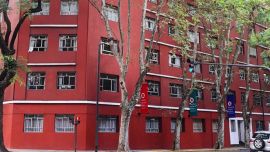According to specialist estimates, Argentina ended the first half of the year at a poverty rate of between 42 and 43 percent.
This would imply that a further one million people have slipped below the poverty line since the most recent official figure published by the government. Back in March, the INDEC national statistics bureau reported that 39 percent of Argentines living in the country’s 31 largest urban areas, some 11.5 million people, were classified as poor in the second half of 2022.
"The increase in the year-on-year poverty rate seems to be mainly explained by an increase in total household income that is considerably lower than the increase in the value of the total basic food basket. That is, the increase in the total basic food basket between the second half of 2022 and the first half of 2023 exceeded 70 percent, while total household income increased by less than 50 percent," Martín González Rozada, director of the master’s programme in Econometrics at the Torcuato Di Tella University (UTDT), explained in an interview with Perfil.
Data from the university registered a poverty rate of 43 percent in the first half of the year. In the country’s inland region, the rate stood at 40.3 percent in the first quarter of the year, rising to 45.5 percent in the second quarter. That would be the highest rate since the first three months of 2006, when 44.5 percent of the nation lived below the poverty line.
Using data from the first three months of the year, Leo Tornarolli, an economist and researcher at the National University of La Plata, also recorded an increase in poverty over the October 2022-March 2023 period.
In the second quarter of this year, with inflation soaring and formal wages failing to keep pace, economic activity was also damaged by the consequences of drought.
Agustín Salvia, director of the influential Social Debt Observatory at the Catholic University of Argentina (ODSA-UCA), told Perfil that "another increase in poverty of 42 or 43 percent is to be expected for the six months that have just ended.”
He continued: "There is a 25 percent [of the population] in structural poverty, who are chronically poor, that is to say, for several generations. They are in the informal sector or in social programmes, in urban areas of great marginalisation and exclusion.
“But you have another part, which is between 15 and 20 percent of ‘new poor,’ who are lower middle classes that have fallen into poverty. And they are poor not so much because of their residential infrastructure conditions or educational human capital, but basically because their [salary from] work is not enough to live on because it is devoured by inflation.”
There are factors that explain why things have not escalated even further: Argentina’s low unemployment rate and economic activity, which has acted as a spur and prevented the figure from soaring.
"Two factors are holding back an increase in poverty. On the one hand, the situation of a fairly high aggregate demand for employment that is still growing, although in recent months it has been falling," Salvia explained.
“The second variable is that social programmes now reach more than 40 percent of households in Argentina. If we count all social problems plus food aid excluding pensions, we have the fact that four out of ten households are receiving some kind of aid. So, in this context, it is understandable why poverty does not explode."
Specialists also agree that another cause is that the level of economic activity has not fallen dramatically.






















Comments